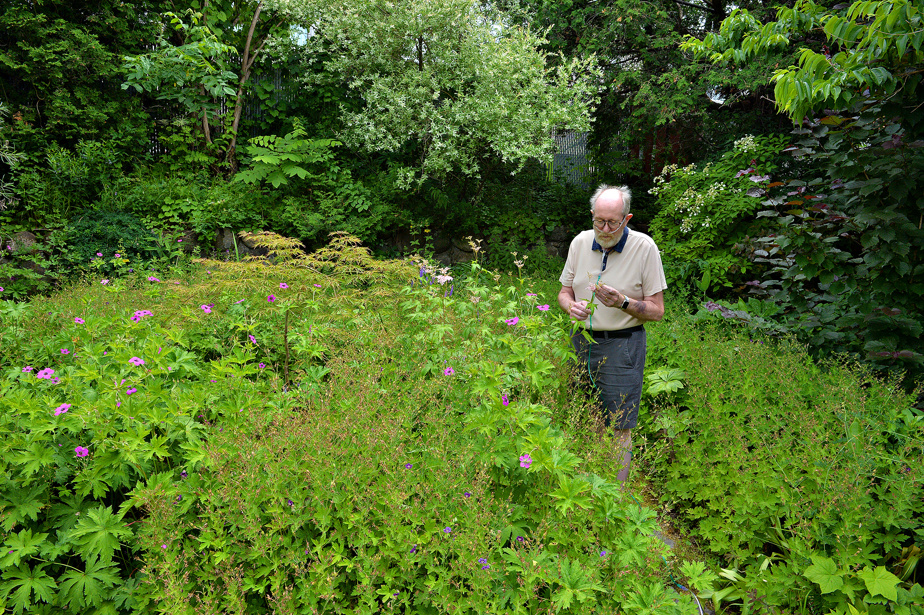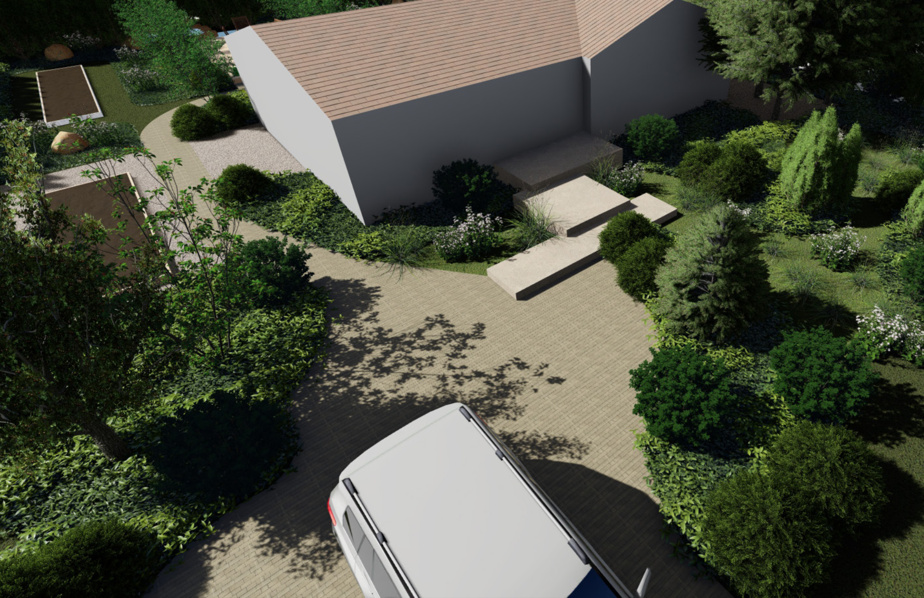A dense, straight hedge looks chic, clean, a bit like a well-kept lawn. But a neglected or poorly trimmed hedge can be ugly for a long time… even more so than an abandoned lawn! Looks at the relationship between man and the hedge.
Posted at 12:00 p.m.
There are tailors, and there are tailors. Jean Perrault considers himself to be part of the second category. He has been trimming hedges and shrubs in the Basses-Laurentides region for 35 years. For him, it is not only a livelihood, but also a passion. “I like it, going to work”, summarizes Mr. Perrault.
And his customers, he says, are proud, very proud of their hedge.
“Some people have been cutting their hedges for 25, 30 years, underlines Jean Perrault. They don’t put it in anyone’s hands, and with good reason. »

PHOTO PHILIPPE BOIVIN, THE PRESS
Jean Perrault trims a hedge in Sainte-Thérèse.
Some of them accompany the trimmers throughout the operation to ensure that the hedge is trimmed according to the rules of the art. Jean Perrault remembers this gentleman who tapped his freshly cut hedge with his cane to give it a little volume, a bit like the customer who runs his hand through his hair when leaving the hairdresser.
“There are those who are meticulous in life. Their house is neat, their car is clean, their parking lot is clean, there are no weeds on their lawn… It’s a whole. »
No in-between
Jo’Anne Bélanger shares the same passion for the cedar hedge. (We say cedar in Quebec, but it’s actually western cedar.)

PHOTO PROVIDED BY JO’ANNE BÉLANGER
The hedge of Jo’Anne Bélanger
Thanks to baby cedars that she went to pick in the woods, Jo’Anne grew two (majestic) hedges that serve as shelter against the wind on her land in Saint-Sylvestre, in Chaudière-Appalaches. One for its swimming pool and another around the fireplace.
Its hedges are narrow, dense, straight.
“The thuya left free, as a tree, is absolutely beautiful too. But when you plant it to make a hedge, you have to maintain it. We have no choice,” notes Jo’Anne Bélanger, who has seen hedges cut down with a saw because they lacked love.
“I am a good witness to the disputes between neighbors that can be caused by cedar hedges! she adds with a laugh.
In his eyes, either we like it or we don’t like it. “I don’t think there’s any in-between. »
“The taste of crying”
In the opposite camp, there are those who find that the cedar hedge attracts too many insects, those who find it old-fashioned, or those who are tired of the annual cuts. There are also some who have nothing against hedges in general, but everything against THEIR hedge (or that of their neighbour). A hedge that has been left to grow and is subsequently pruned too tightly, whether cedar or hardwood, leaves something to be desired.
-

PHOTO EDOUARD PLANTE-FRÉCHETTE, THE PRESS
Bouchra Moutayakine’s hedge
-

PHOTO EDOUARD PLANTE-FRÉCHETTE, THE PRESS
Bouchra Moutayakine’s hedge
-

PHOTO EDOUARD PLANTE-FRÉCHETTE, THE PRESS
Bouchra Moutayakine’s hedge
1/3
When Bouchra Moutayakine bought her house in 2021, the cedar hedge that framed her land was already not very beautiful. But when his neighbor decided to prune whatever he could on his side in hopes that it would “grow back better,” the hedge became downright unsightly.
Discouraged, M.me Moutayakine had sought advice on a gardening Facebook group. “Every time I see her, I want to cry,” she wrote.
A year later, the emotion is less strong (“I got used to seeing her so ugly!”), but the hedge has hardly improved. Mme Moutayakine is well aware of this: there is not much to do.
“It’s a shame, because a beautiful garden and a well-kept hedge gives the image of something majestic, even if the house is not majestic,” says Ms.me Moutayakine, who now has to deal with the “little neglected side” of his land.
Without forgiveness
In the eyes of horticultural columnist Larry Hodgson, author of the blog The Laidback Gardener, if people have cedars, it is primarily to gain a certain prestige from them. In short, a bit like the quest for the perfect lawn. But the problem with thuya is that it is a plant “which does not forgive”, he said, joined by telephone.
If we prune in the green, the plant will grow back. But if you prune too far, in the brown wood, the branches will no longer turn green there.

PHOTO PATRICE LAROCHE, THE SUN
Larry Hodgson
If, one year, you haven’t had time to trim it, the hedge exceeds the permitted height and you have to trim it, it will be completely brown… and it won’t resume.
Larry Hodgson, horticultural columnist
If an incident happens (like the woman who recently wrote to the Laidback Gardener to say that a section of her hedge had been burned by a truck hose), “there is not much to do,” summarizes Larry Hodgson, apart from pruning around a bit and hoping that the bottom stems eventually grow enough to hide the hole.
Larry Hodgson prefers hedges of deciduous shrubs, such as shrubby cinquefoil, blueberry, arctic willow or Japanese spirea. Plants that grow back… and forgive. “That’s my lazy gardener view!” »
Tailor Jean Perrault agrees that sometimes the solution is to rip everything up and replant, but he prefers to explore other avenues first, such as pruning and redirecting the sap.
Redesign the screen
The relationship between man and the hedge is also the relationship between man and intimacy, believes for his part Émile Forest, gardener and general coordinator of New neighbors, an organization aiming to transform our relationship to the territory. If we feel good in nature, it is among other things because it allows us to camouflage ourselves, he says. “The hedge is perhaps an extension of that”, sums up Émile Forest.

SKETCH PROVIDED BY NEW NEIGHBORS
Plant bed in the front yard
To create this screen, the hedge is one solution, the wooden fence dressed in vines is another, but Nouveaux neighbors likes to see things differently. “To promote diversity, I think there is a way to create beds of plants by mixing different species, which have a little more organic shapes — cedars or hemlocks, perhaps, but also other shrubs . »
Half of New Neighbors’ clients are suburban residents who have cedar hedges. Tear it all out? This is generally not what is recommended. The cedars not only welcome birds, but it is a native conifer, which grew in the island of Montreal. Often, Nouveaux neighbors suggests that its customers cut their hedge differently, let it grow a little, improve it with other species. Yes, Émile Forest agrees, we are losing ground, but we are giving back to nature. “To link the spaces of the courtyard, we can make a network of paths framed by nature,” he says. It doesn’t have to be a white carpet with a cedar hedge background. »
Émile Forest also sees a parallel between the cedar hedge and the lawn, “two great beauties of nature that have been domesticated and denatured”. “We lost sight of what a cedar was,” he said. We use it in a way that is not disturbing, but that could be really different, more diversified. »

